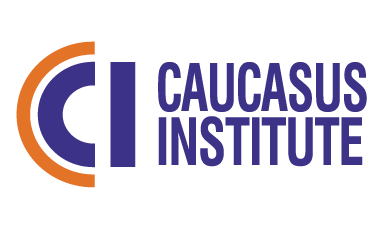Three elements form the society that we have now. Only one of them was developed during the last century with the invention of affordable transportation for mass use (e.g., airplanes, trains, and cars). The first two are wars, agriculture, and animal domestication, and the last one is globalization (e.g., trade, tourism, traveling). It is out of imagination for people now to stop wars, or having pets, or domesticating animals for various reasons starting from using them for meat or dairy products made from their milk, organize international trade, or traveling. Unfortunately, these are also the reasons for pandemics.
Pandemics are not new. Long before COVID-19, there was a plague back 2000 years ago that most historians assume killed, Marcus Aurelius. This theory is backed by the absence of historical records for about 75 years in Roman history after Marcus Aurelius’s stepson inherited the Roman throne. Historians think that it is because something horrible happened, and maybe that was a plague. The same is about the all-powerful Chinese Han dynasty that collapsed at around 200 AD. People at that time had no immunity to the diseases. One of the biggest plagues was during early middle ages, back in 6th century AD, during the rule of Byzantine (they called themselves Roman) emperor Justinian I. “According to the historian Procopius and others, the outbreak began in Egypt and moved along maritime trade routes, striking Constantinople in 542” (“Plague,” 2020). This was followed by the 14th century Black Death that struck Europe. “The number of deaths was enormous, reaching two-thirds or three-fourths of the population in various parts of Europe” (“Plague,” 2020). According to some calculations, 25 million people died from the plague of Black Death. (“Plague,” 2020).
Thanks to the stabilization of climate, hunting, and gathering, people were able to make the Neolithic Revolution, that Jared Diamond claims is “the worst mistake in human history” (Lanchester, 2017). Humans transformed from hunting and gathering to doing agriculture and domesticating animals. From animal and plant diseases, the virus spread to humans and killed them. This transformation was also the beginning of the emergence of state because “grains are, in Scott’s words, “visible, divisible, assessable, storable, transportable, and ‘rationable'” (Lanchester, 2017). All the factors mentioned above gave the ability for the tax collector, the hallmark of any state, to “extract a surplus from the produce of agriculture” (Lanchester, 2017). The Neolithic Revolution is both about progress and regress at the same time because though it gave us a lot; it took a lot. “It turns out that hunting and gathering is a good way to live. A study from 1966 found that it took a Ju/’hoansi only about seventeen hours a week, on average, to find an adequate supply of food; another nineteen hours were spent on domestic activities and chores “(Lanchester, 2017). People now work much more, at least 40 hours per week plus the domestic work, but are exposed to many kinds of risks starting from wars, state aggression, human-made catastrophes (e.g., the explosion of Chernobyl Nuclear Power Station) and of course plagues.
Trade and traveling cannot stop, but it is also a great way to spread all kinds of diseases. People chose not to stop trade or travel but to fight against various diseases with the tools they had long before there was any proven scientific method. As soon as we invented transportation that helped us reach the furthest areas possible, we started spreading all kinds of diseases. There was also a very poor understanding from the medical point of view of the plague and its spreading. We should remember that It is less than 150 years that we know about germs thanks to the father of germ theory Louis Pasteur. “As late as 1768 the first edition of the Encyclopædia Britannica repeated the commonly held scientific notion that plague was a “pestilential fever” arising from a “poisonous miasma,” or vapour, that had been brought “from eastern countries” and was “swallowed in with the air” (“Plague,” 2020). Though, there are instances when people without understanding the nature of plagues were able to contain and mitigate it—for example, the quarantine. “The practice of quarantine, as we know it, began during the 14th century in an effort to protect coastal cities from plague epidemics” (“Quarantine,” n.d.). It comes from the Italian word quaranta giorni that means forty days. Italians understood that ships arriving on the shores might have ill people on the board that will transmit the disease that’s why they isolated the ship in a containment area for forty days (“Quarantine,” n.d.).
Pandemics, if that may be said so, went viral during and after wars as well. The best and most recent example is World War I and the most prominent exception in WWII because antibiotics were invented right before it. The Spanish flu or Influenza spread in 1918 after the end of WWI, which took 20 million people. “The unsanitary conditions – especially in the trenches along the French border – helped it incubate and spread” (Dowling, 2020). When the soldiers returned home, they helped to spread the virus. Eventually, it killed “between 50 million and 100 million people,” which is a more significant loss than the war’s result (Dowling, 2020). There are also examples when a territory wasn’t and was conquered because of the virus. For instance, Europeans couldn’t conquer Africa because of Malaria. However, Europeans conquered America because Native Americans had no immunity to European diseases. The only Native American disease was syphilis. Famous philosopher Friedrich Nietzsche, writer Oscar Wilde, composer Franz Schubert and many more died from syphilis.
Author – Margarita Dadyan
a participant of CI’s “South Caucasus: Politics in times of crisis” online course, implemented with the financial support of the Embassy of Switzerland in Armenia
References
The Editors of Encyclopaedia Britannica (March 21, 2020). Plague. Retrieved from https://www.britannica.com/science/plague
Center for Disease Control and Prevention (n.d.). History of Quarantine. Retrieved from https://www.cdc.gov/quarantine/historyquarantine.html
Lanchester, J., (September 18, 2017). The case against civilization. Retrieved from https://www.newyorker.com/magazine/2017/09/18/the-case-against-civilization
Dowling, S. (March 3, 2020). In the aftermath of World War One, a flu pandemic swept the world, killing at least 50 million people. What lessons can it teach us about Covid-19? Retrieved from https://www.bbc.com/future/article/20200302-coronavirus-what-can-we- learn-from-the-spanish-flu
Opinions expressed in this post do not necessarily represent those of the Caucasus Institute and Embassy of Switzerland in Armenia.





